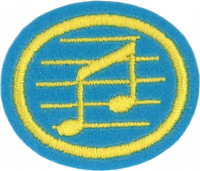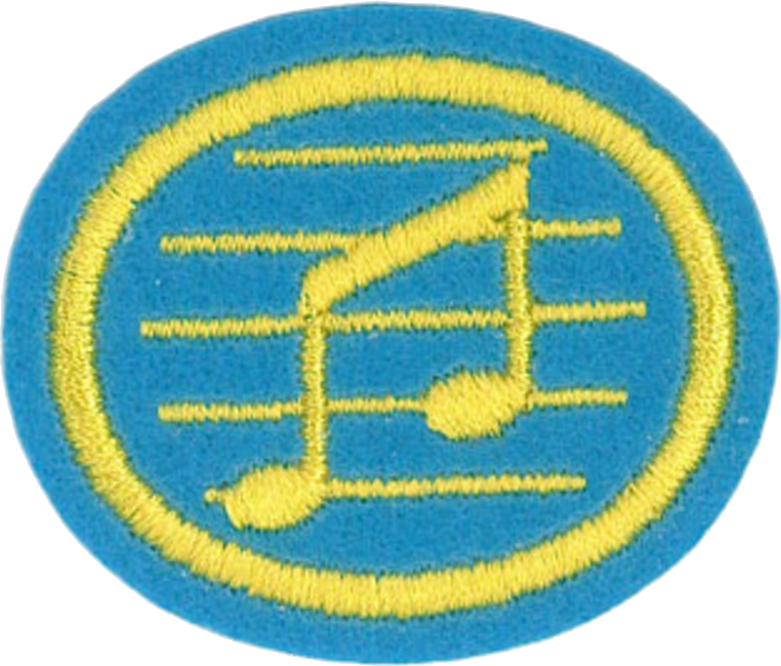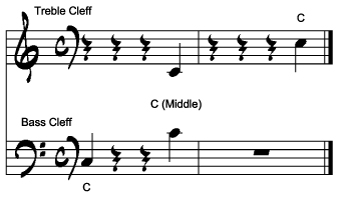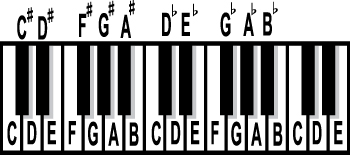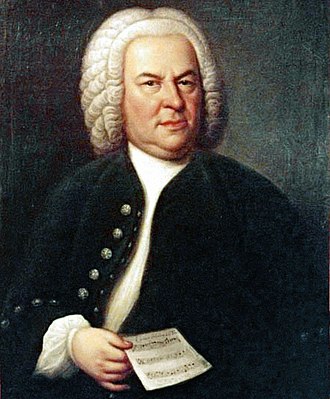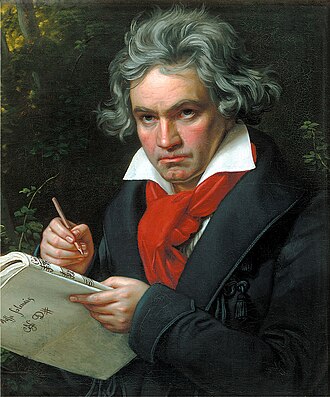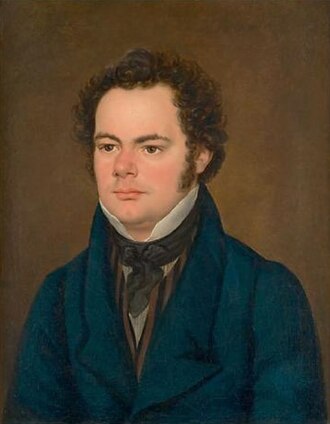AY Honor Music Answer Key used by South Pacific Division
- Complete Option One or Option Two:
There are two options for earning this honor. The first involves formal training, but if that is unavailable, the second option can be exercised to earn the honor without formal training.
1
This option involves formal training.
1a
For tips and instruction see Music - Beginners.
1b
i
ii
1c
2
This option requires no formal training, but it covers the same material that a formal course would.
2a
Scales are an important building block of music. They are the basis of melodies and chords. Without knowing your scales, you are like a car mechanic without his tools.
What are scales? A good way to define a scale is to list the following characteristics:
- A scale is an organized series of pitches
- A scale utilizes sharps and flats, when necessary
- A scale consist of a series of notes that differ in sound
- A scale is linked to the concept of "Keys" in that a song which utilizes a given scale is said to be in that key (For example: "Mary had a little lamb in C major").
A major scale has 8 tones. The (C major scale) is: C-D-E-F-G-A-B-C.
These notes in the major scale form a pattern of steps between notes called whole tones, or semitones. On a piano keyboard semitones are from key to key with no keys in between, whole tones always skip a key with one key in between.
The major scale is made up of a pattern of two whole tones, followed by a semitone, followed by three whole tones, ending with one more semitone.
This illustration shows the difference between whole tones and semitones on a piano keyboard.
Notice how the whole tones skip a key on the keyboard, and semitones do not. Also you can see that two semitones makes up a whole tone. Whole tones and semitones are types of intervals.
The natural minor scale has a whole tone semitone pattern of whole tone, semitone, whole tone, whole tone, semitone, whole tone, whole tone.
Other scales such as melodic minor, harmonic minor, pentatonic, and whole tone have different patterns of whole tones and semitones.
2b
In order to write a scale on your own, you are going to need to study and understand a few musical terms. The following sections will help you better understand the musical theory that makes up a scale.
Clefs
The word clef is used to describe the symbol at the beginning of the set of five lines on which notes are printed. This symbol tells the player what the notes are going to be within the five lines. In piano music both Treble and Bass clefs are used. Usually, the pianists left hand plays the lower notes in the bass clef with his left hand, and the upper notes in the treble clef with his right hand.
This illustration shows a note called middle C. The note drawn in the bass clef is exactly the same note as the one drawn in the treble clef.
The set of five lines on which the notes are drawn is called a staff.
Note Names
The notes on the treble clef have different names for the notes within the lines or on the lines of the staff than the note in the bass clef. These diagrams show the names of the notes in between and on the staff lines for both treble and bass clef.
Notes names can be seen on a piano keyboard as well. The notes played with the black keys on a piano keyboard are named with the note letter plus a symbol to indicate if the note is above or below the note named by a semitone. The ![]() symbol means the note is a semitone above the note name and is called sharp. The
symbol means the note is a semitone above the note name and is called sharp. The ![]() symbol means the note is a semitone lower and is called a flat.
symbol means the note is a semitone lower and is called a flat.
Notice how the black keys can each be named with two names. This is called enharmonic spelling.
Sharps and Flats
Sharps and flats are notated (drawn on the staff) by placing the sharp or flat symbol in front of the note on the staff. This example shows the notes D, E, F![]() , and G.
, and G.
Scale Root
The note that the scale starts on is called the root note. Below you can see that the first note for the C Major Scale is the note named "C"
Scale Degrees
The word degree in music simply means a number that has been assigned to each note within a scale. In the C major scale below you can see that the scale degree of E is 3, F is 4, and so on.
The scale degree number 1 will not always be assigned to the note "C". It is assigned to the starting note of the scale or key of the piece is composed in. For example, a song in the key of "G" would have the scale degree 1 assigned to the note "G".
Based on what you now know about scale degrees, note names, clefs, and using the whole tone / semitone patterns shown above, you should now have enough information to write a scale in both treble and bass cleff.
2c
2d
'Waltz', or valse from the German term, is a piece of music in triple meter, most often 3/4 but sometimes 3/8 or 6/4. A waltz has a 1.2.3. - 1.2.3. count and (generally) a slow tempo. Waltzes typically have one chord per measure, with the root of the chord as the first note.
Classical composers traditionally supplied music for dancing when required, and Schubert's waltzes were written for household dancing, without any pretense at being art music. However, Chopin's 19 waltzes (five he wrote as a child), along with his mazurkas and polonaises, were clearly not intended to be danced to. They marked the adoption of the waltz and other dance forms as serious composition genres.
Other notable contributions to the waltz genre in classical music include 16 by Brahms (originally for piano duet), and Ravel's Valses nobles et sentimentales for piano and La Valse for orchestra.
The waltz style is found in nearly every kind of European and Euro-American folk music and also in classical music. Although waltzes are often associated with the dance of the same name, not all waltzes were composed as dances: some were written for concert performance.
The waltz had once held so much importance in European music circles that great waltz composers received the honorary title of “Waltz King”. The title came with an accompanying “royal staff”, a decorated silver baton which was passed from musician to musician. Johann Strauss Junior, the most famous “Waltz King”, received the title frequently.
2e
The names of the types of notes come from the fraction of a measure that each note gets in bar of music in four four time. In the 4/4 time signature, the top 4 indicates how many beats are in each bar of music, and the lower 4 indicates that a quarter note gets one beat. Since four quarter notes would fill the entire bar, they are called quarter notes. A half note would get two beats, or ½ of the measure, and a whole note gets 4 beats or the whole measure.
Quarter notes have a solid note head with a stem attached.
Half notes have a hollow note head with a stem attached.
Whole notes have a hollow note head, but no stem at all.
2f
Bach, Johan Sebastian (1685-1750)
Handel, George Frederic (1685-1759)
Beethoven, Ludwig van (1770-1827)
Chopin, Frédéric François (1810-1849)
Schubert, Franz (1797 – 1828)
Mozart, Wolfgang Amadeus (1756 - 1791)
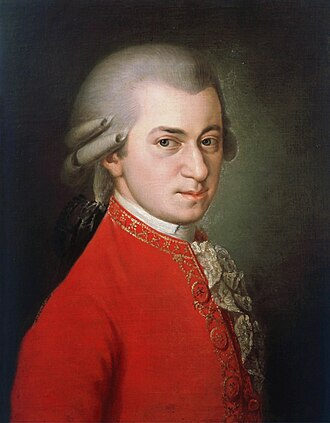
|
Haydn, Joseph (1732 - 1809)

|
Tchaikovsky, Pyotr Ilyich (1840 - 1893)
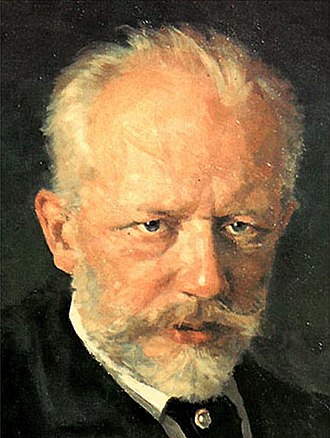
|
Many more composers articles have been written for wikipedia.
The Composers category in Wikipedia lists composers grouped by musical era.
2g
2h
2i
2j
2k
The modern definition of the word Orchestra tends to refer to the ensemble of mixed instrumentalists playing classical music. When you think of an orchestra, you imagine seventy or eighty or more musicians dressed in black on stage. This was not always the case.
In the musical time period known as Renaissance times (1450-1600) these musical groups not only accompanied vocal music, but played supporting music for drama. Ensembles playing this music were formed from instruments as varied as the harpsichord, viol, lute, recorder, cornett, sackbut, and organ.
The orchestras seen in the Baroque period (1600-1750) began to get bigger. Previous to this, vocal music was the most important music, and instrumental music was less so. The ability of the craftsmen to build instruments had improved to the point that the finest violins ever built were made around this time.
The orchestra of this time centered around the harpsichord. A harpsichord was like the piano of today, except a mechanical pick plucked the strings like a guitar, rather than a hammer hitting the strings like a piano. Violins, violas, cellos, and bass violins provided string sounds. Woodwind instruments like recorders, flutes, bassoons, and oboes, added color to the sound. Trumpets were used in orchestras as well, but were long natural trumpets without the more modern invention of valves. The timpani was the main percussion of the period.
Orchestras of the Baroque period were small by modern standards, numbering only about twenty to thirty players.
The next musical period is called the Classical period (1750-1825). During this period the orchestra grew to include 30-40 players. The brass section grew to include horns and trombones. Woodwinds included piccolos, clarinets, and contra bassoons (bass).
The Romantic musical period (1820-1900) brought new changes to the orchestra and it's instruments. The industrial revolution allowed for technical advances in the fabrication of instruments, especially the brass section with the invention of valved instruments. This allowed composers much more freedom in the parts they could write for all the instruments.
The tuba, bass clarinet, and many percussion instruments were added. This required additional string players to make the orchestra sound balanced. In his Symphony of a Thousand, Mahler had wrote for an orchestra containing one hundred and thirty musicians so it is clear to see with what enthusiasm composers explored the limits of possibility.
A current, professional symphony orchestra usually contains about seventy or eighty instrumentalists selected to fill the four sections of a modern orchestra; Brass, Woodwind, String, and Percussion. This will vary depending on the music being performed.
Brass Instruments
Woodwinds
Strings
Percussion
